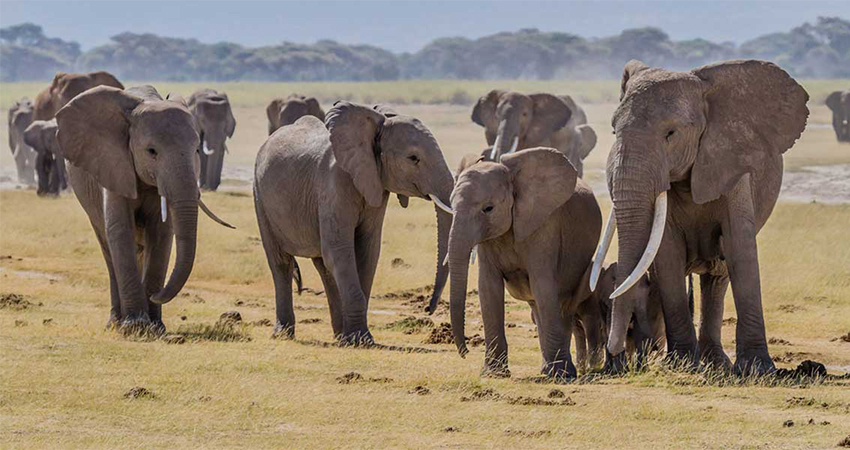DAY 1: NAIROBI – AMBOSELI
Pick up from the hotel at 02:30 pm to start your budget Amboseli safari well designed for group joining ex – Nairobi. Meet the group and drive to Amboseli national park arriving in your camp in the early evening, check in to your room and relax. Amboseli is worldly known as the home to the African Elephant which is much larger than any other elephants. Furthermore their ears take the shape of the African continent. In addition, a lot of animal species are found too. Among them the buffalo, zebras. Dinner and overnight at the campsite.
DAY 2: AMBOSELI FULL DAY
After breakfast, you will proceed for a full day game drives in this park. This marks the start of your budget Amboseli safari. Amboseli contains swamp grounds in which elephants and hippos bathe in abundance. The swampy and lush vegetation is responsible for the elephants growing that big since they have plenty of food to eat. Furthermore, Amboseli has open plains as a result provide excellent visibility for game viewing. In addition, a variety of plains game, antelopes and birds can also be seen. You will see the Mt. Kilimanjaro’s peak too if weather conditions permit. We will cater for picnic lunches. Later in the evening return to the campsite for dinner and overnight.
DAY 3: AMBOSELI – NAIROBI
Wake up very early, have your breakfast, check out of the camp and proceed for a very early morning game drive in Amboseli National park and get a chance to watch the sun rise and if you are lucky you get to see the iconic peak of Mt.Kilimanjaro. Finally exit the park and drive back to Nairobi or Namanga boarder marking the end of your budget Amboseli safari.


